Liquid soap in plastic bottles is horrific for our environment
Liquid soaps in their little plastic bottles may seem convenient. They don’t dribble their suds or coagulate in a soap dish. But they have at least two huge drawbacks. Going back to the bar can solve a couple of big problems.
Liquid soaps problem 1: their plastic containers – an estimated 577 million of them entered the environment last year. That’s a lot of plastic, miles and miles of it – 45 thousand miles of plastic bottles, enough to go around the world 1.8 times. * And plastic pollutes.
Bar soaps, on the other hand, have minimal packaging, a simple paper wrap, a string of raffia, and sometimes – they come bare.
Problem 2 – Ingredients
What’s in those little plastic bottles? The ingredients can may harm you.
An April 2013 article in INC. Magazine on the iconic brand. Dr. Bronner’s Magic Soap quoted David Bronner saying. “There’s nothing more elegant than a properly formulated soap. It’s the most beautiful lather, great skin-feel, great after-feel. You could basically eat our soap.” Not that we recommend that.
“He’s trying to explain the difference between a true soap … and the soaplike detergent products most of us use every day.….. At its most basic, the difference is natural ingredients versus synthetic ones. …. most detergents are made at least in part from nonrenewable petrochemicals (because it’s cheaper that way) and include a chemical cocktail of foaming agents, preservatives, and fragrances that, by and large, have never been tested and found safe for human consumption,” author Tom Foster wrote.
Seems like there’s a lot more to liquid soaps (and some beauty bars) than suds and smell.
What’s in soaps?
Some of the things in liquid and non-natural soaps may be triclosan and triclocarban.
Two Little Blackbirds, a natural soap-maker, says – “These synthetic antimicrobial chemicals kill aquatic life after they go down your drain and into the local water supply, and have been shown to disrupt proper thyroid functioning in humans. Use of triclosan is also associated with the rise of antibiotic-resistant strains of bacteria, producing dangerous infections that don’t respond well to antibiotic medicine. Triclosan or its cousin, triclocarban, can be found on the ingredients labels of soaps, toothpaste, and other personal-care items.”
It not just natural soap makers that report problems with these ingredients. According to Mintel Soap, Bath and Shower Product Report, 2012, “there have been reports that triclosan, an ingredient used in many antibacterial soaps, including liquid hand soap, is potentially dangerous to users and may not provide the efficacy that users think they are getting using an antibacterial product.”
Two Little Blackbirds notes other questionable ingredients and explains their dangers. The cocktail of additives includes “DEA, diethanolamine, cocamide DEA, lauramide DEA, and monoethanolamine, Fragrance, parfum, linalool, limonene. MEA. PEG, polyethylene glycol, polyethylene, polyoxyethylene, oxynol, or words ending in the letters “eth,” such as myreth, oleth, laureth, ceteareth.”
Even “real” soaps differ
In addition to chemicals and preservatives, Foster wrote in INC., “Within the world of real soaps, there are other levels of purity that separate the brands. Most mass-produced soaps are made with animal fats such as tallow (beef fat) or lard (pig or mutton fat). …. Natural soaps are made with nonanimal fats such as olive oil, coconut oil, and palm oil.”
Fortunately, today, there’s a return to natural and/or local,
not only in foods, but also in soaps. It’s easy to find soaps made from goat’s milk (my favorite), olive oil, jojoba, aloe, and other natural ingredients. Natural aromas have also proliferated – lemon, lavender, almond, patchouli, orange, rose, and the more masculine Frankincense (yes, I’ve seen it) plus scores more. Some soaps may be made with perfumes, however, so it’s best to read the labels.
Where to find good soap
Check your local health food stores, specialty stores, and even local craft markets. You’ll discover lots of handcrafted soaps made from natural ingredients. To get an overview of the variety, visit The Handcrafted Soapmakers Guild’s gallery of about 100 different specialty soaps. And Real Handmade Soap is another source for finding natural soaps.
Living a good life means attention to all of life’s details – and making each activity – even what may seem like the most trivial – matter. And when it comes to getting clean, living a good life just may mean going back to the bar.
*Author’s note: Here’s how the estimate of plastic waste was derived. In 2011, people spent $1.9 billion dollars on liquid body wash and $788 million on liquid hand soap (Source: Mintel Soap, Bath and Shower Product Report, 2012.)
Estimating $5 each for liquid body wash and $4 each for liquid hand soap, that’s 577 million plastic containers. Next, I estimated the plastic bottles at an average of 5 inches each, that’s 2.8 + billion inches, divided by 12 inches = 240,416,666 feet. I divided that by 5,280 feet to come up with 45,533 miles, enough to go around the world 1.8 times.
By Bojinka Bishop
Photos on soap making courtesy of The Parsonage Handmade Soaps.
See Comments. Click here. Share your ideas and comments. Click here.
Related stories:
- Solo Dinners: Treat YourselfCereal for dinner? No way. You deserve a lovely meal. Cooking for yourself has many advantages. You can 1) eat what you really enjoy, without catering to other’s tastes, 2) save money, it’s cheaper than eating out or buying prepared foods, ...
- Going to the hospital – ambulance vs. driving Sometimes it’s better to take an ambulance to the hospital than have a friend drive you in an emergency. It may sound scary and lonely, but it maybe better for you. Why?...
- Some coffee increases cholesterolWho would have thought – how you brew coffee can increase your cholesterol. Electric drip? Espresso? French press? Which method is better? Which pot is better? ...
- Sweet TreatFestive and delicious, chocolate covered strawberries are an easy spring and summer dessert (or anytime treat). Talk yourself into it… after all, you’ll be eating fruit! You’ll feel pampered – or like you’re at a 5-star restaurant. Either way – they are easy to make and delicious to eat....
- Tips for Hiking AloneHiking solo offers wonderful opportunities for getting in touch with nature. At the same time, it's often wise to take some precautions. 1) Hike on trails with at least five cars in the parking lot. Enough folks if you need someone, but not too many get in your way. 2)...
Comment(s) on Liquid soap in plastic bottles is horrific for our environment
FlyingHighSolo.com
Celebrating special people, good ideas, and useful actionsSubscribe
Keep on top of what's new – subscribe to Flying High Solo! You'll get a brief email alerting you to new articles. (Your email is safe -- we will not share it with anyone).
What readers are saying
"amazing variety of topics"
"an intelligent, strong, creative, eclectic approach .... that we don't get a chance to read everyday"
"very cool and intelligent"
Highly Recommended
 Bella DePaulo's blog for Psychology Today, "the truth about singlism..." News, analysis, facts, and stories about being single in America
Bella DePaulo's blog for Psychology Today, "the truth about singlism..." News, analysis, facts, and stories about being single in America

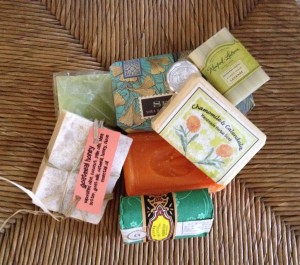
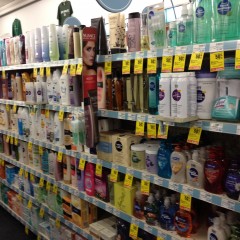
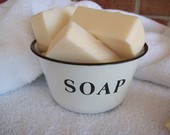
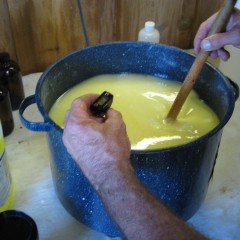
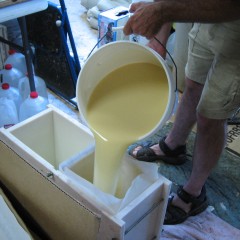





Fascinating! It is a surprise to learn the hidden story of liquid soap.
Tallow and lard are definitely used in Natural Soaps.
We raise our own beef and I render the tallow from them
which are grass fed and hormone free. Also true of the lard.
These ingredients are as natural as you can get and added with
other oils makes a fine, long lasting soap. Soaps from by-gone days were made with all tallow and/or lard, as they did’t have
access to all the fine oils we enjoy today.
Kathy
Not only is real soap made with animal fats, that is how they started out to be made in the beginning of soap making and many of us, feel it is superior soap compared to all veggie oil soap and the customers think so too.
My animal fats are pasture raised and organic and make a really nice gentle soap AND shampoo bars.
Yes, of course, animal fats are natural. Thanks for catching that! Buyers may just want to read the labels and choose the ingredients they prefer – animal or plant oils.
Palm oil has to be shipped by diesle powered ships that leave pollution in the form of their trash & petroleum products in the ocean. Tallow & lard can be found locally and helps to truly recycle thus saving the ocean from contamination & helping local economies.
I used to sail with my now ex-husband on an oil tanker and saw first hand how the ships pollute.
I appreciate the discourse.
I appreciate the open discourse on issues. It helps me to learn even more! Thanks.
[…] Mother Jones suggests going back to a wash cloth and soap! Click on Flying High Solo’s “Back to the Bar…. Soap that is” for more information on how our cleaning habits may be dirtying the environment and our simple […]
[…] about liquid soaps? The excess packaging (think about where the plastic ends up…), and the use of petroleum and DEA, synthetics and chemicals . On the other hand is there anything more delicious looking, within the non-food categories of […]
Keep up the good work, I read few articles on this site and
I think that your weblog is rattling interesting
and has sets of good information.